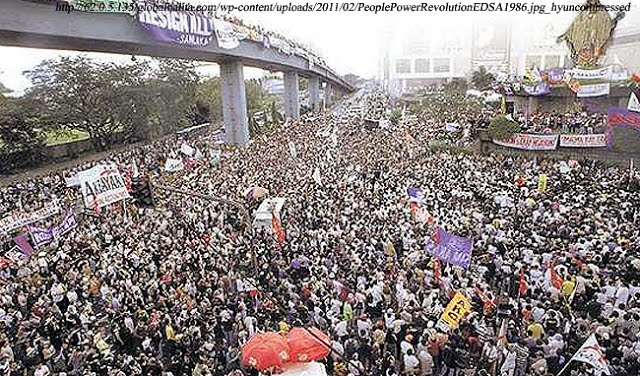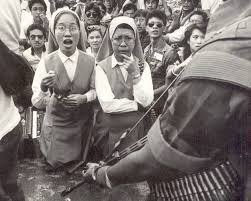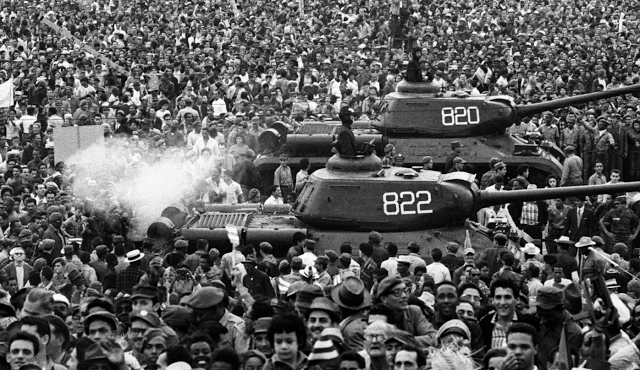
By Ed Diokno
Thirty years ago, the world watched the news on television to witness a bloodless revolution taking place in the Philippines. Filipinos in America watched in awe as Filipino nuns knelt before tanks as millions of Filipinos took to the streets of Manila and a dictator fled the Philippines. Thirty years ago, tears came to my eyes.
I was managing editor of the Philippine News based in South San Francisco, California. The PhilNews was one of the few publications that looked behind the screen of U.S. ally Ferdinand Marcos and saw him as he truly was – a brutal dictator. It was known as the establishment voice piece of the anti-Marcos movement.
Because the PhilNews was unapologetically one-sided in its coverage of the Philippine dictatorship, the newspaper had lost some credibility in journalistic circles. “Obviously biased” was the common description. Other Filipino American and mainstream publications would always take what was bannered in the PhilNews with a grain of salt.
The tentacles of fear reached into the Filipino American community through strong-arm tactics employed by the Marcos regime. Two union and anti-Marcos activists, Silme Domingo and Gene Viernes, were murdered in Seattle by assassins under orders of the Marcos surrogates. New publications were created to compete with the Philippine News. PhilNews’ big advertisers, mostly travel agencies and airlines, were ordered to withdraw their advertising as the price of doing business in the Philippines. Marcos issued arrest warrants for PhilNews writers and editors.

Behind the scenes in the early morning hours of Feb. 25, the Reagan administration, always a supporter of Marcos, saw the writing on the wall and changed its position. Back-and-forth phone calls between Reagan officials and the Marcoses made it clear that the time had come for Marcos to give up his power. A desperate Imelda even tried her hand at negotiations with Reagan’s wife Nancy. First Lady Nancy Reagan assured Imelda that the decision was out of her hands.
In the morning of Feb. 25, 1986, the Philippines had two presidents. Marcos called his supporters to the palace to witness a lackluster oath-taking. Meanwhile, at a large hall in Manila, Cory Aquino, widow of assassinated opposition leader Benigno Aquino was sworn into office by the Philippines’ Supreme Court Chief Justice. Two weeks earlier, in a sham election hastily called by Marcos, Mrs. Aquino “lost” to Marcos in a highly questionable vote count. That phony election was the last straw for Filipinos.
By the evening of Feb. 25, Marcos and his retinue were flying to Clark Air Force Base, a U.S. air base, from which they were flown to exile in Hawaii. In a history-making event, the dictatorship was toppled without a drop of blood.
Back in the United States, the Filipino American community was divided into pro and anti-Marcos camps and with much of their energy devoted to ousting or defending the dictator, Filipino Americans in 1986 were lagging compared to other ethnic communities and needed to strengthen their social, economic and political presence in America. Most Americans were hard put to find the Philippines on the map.
Thirty years ago before social media, television allowed those images to reach across the Pacific and pull Filipino Americans out of the shadows and thrust into the limelight.
Those brave people in Manila raised the self-esteem of Filipino Americans and brought a pride in being Filipino that went beyond the ability to speak a Filipino dialect or whether one was born in the Philippines or the U.S.
The small role that I played – though insignificant compared to Philippine News publisher Esclamado – in convincing America’s mainstream media and politicians on the true nature of Ferdinand Marcos and his despotic regime, convinced me of the power of the written word and the potential of journalism to right wrongs. EDSA and Esclamado also taught me that even though as journalists we are taught to be objective, sometimes, we have to take a stand and fight for what we know in our hearts to be right.
I designed the Philippine News‘ front page the next day with a huge picture taking up two-thirds of the page of millions of Filipinos massing on Manila’s streets. Superimposed over the photo was the one-word headline, all-caps, “FREEDOM!”

(Ed Diokno writes a blog :Views From The Edge: news and analysis from an Asian American perspective.)
(AsAmNews is an all-volunteer effort of dedicated staff and interns. You can show your support by liking our Facebook page at www.facebook.com/asamnews, following us on Twitter and sharing our stories.)


Picture with tanks is from Cuba circa 1960s.